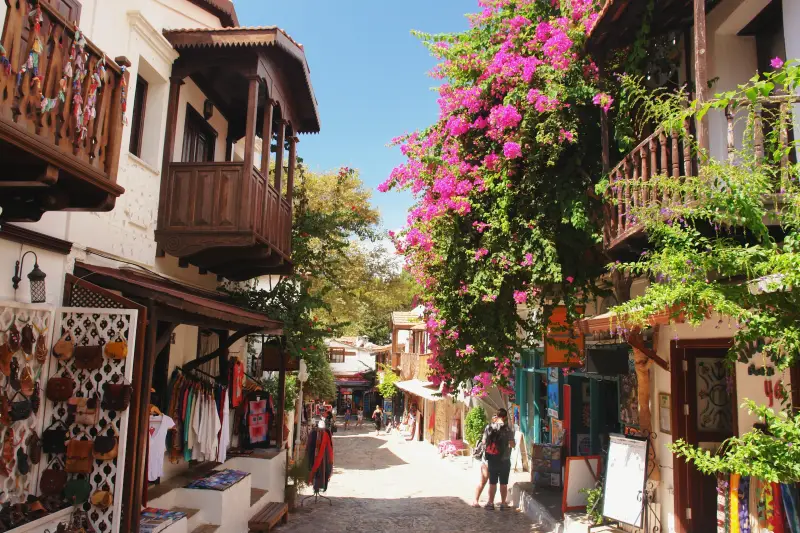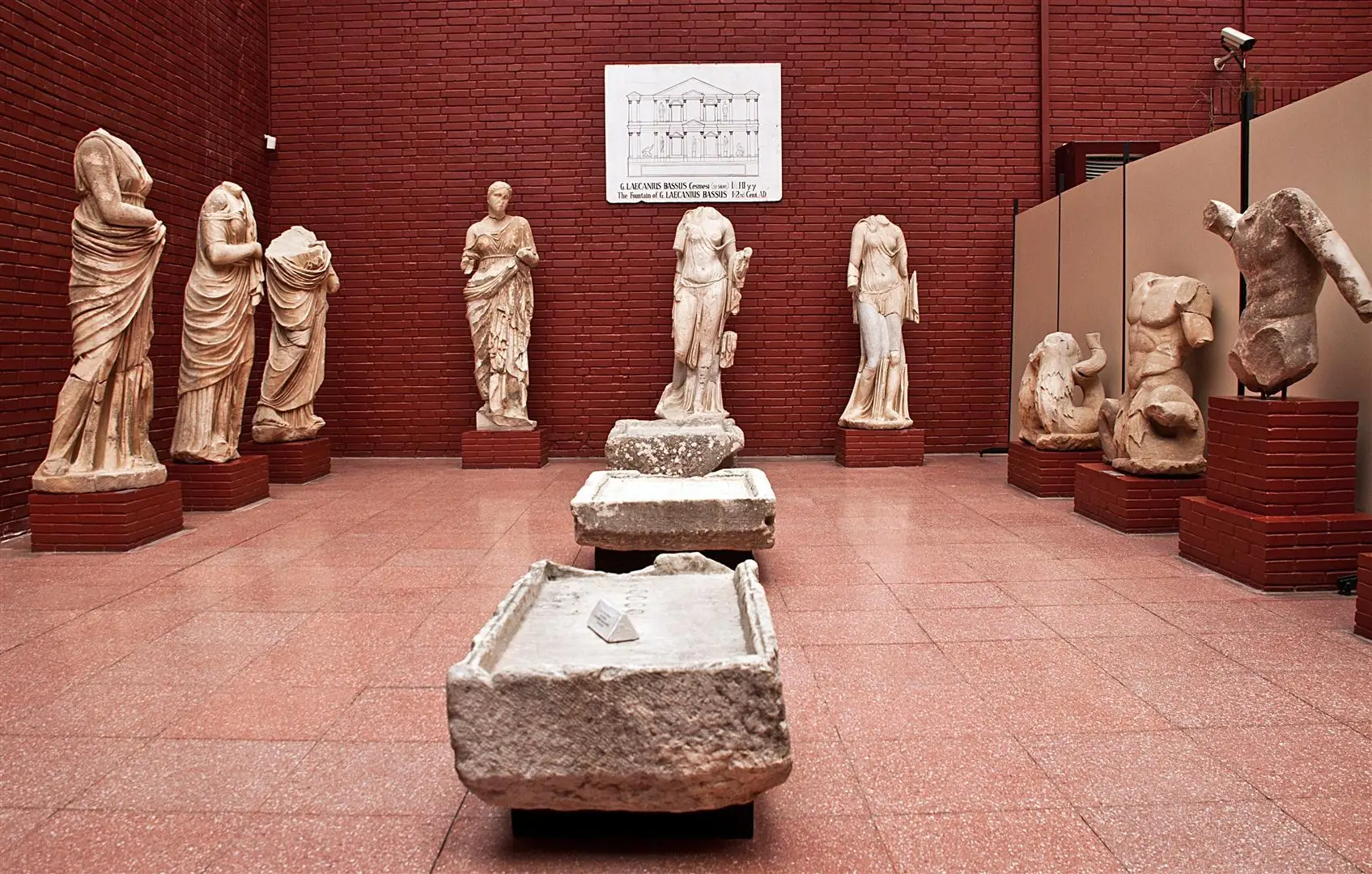Süleyman Fikri Erten founded Antalya Museum in 1922 with the aim of preserving the works from the looting of the occupation forces after the First World War. It was initially in the Aladdin Mosque in Kaleiçi, and later in the Yivli Mosque. Authorities moved the museum to its current building in 1972. The Antalya Museum consists of 14 exhibition halls, open-air galleries. In the galleries, they exhibit statues and various works, and a garden, covering an area of 30,000 square meters. A significant part of the three ancient cultural regions of Lycia, Pamphylia, and Pisidia falls within the responsibility of the Antalya Museum.
We can describe Antalya Museum as an archaeology and history museum as well as a regional museum. The majority of the works in the collection have been obtained from excavations in the region. In the halls, Visitors can seen works reflecting the thousands of years of history of the Antalya lands. You can see them chronologically and sometimes according to themes. Especially with the Roman period works found in Perge and the interesting and unique findings from the museum rescue excavations, Antalya Museum is one of the most important museums in the world. The museum was awarded the “Museum of the Year by the Council of Europe” in 1988.
Museum gallers
Children’s Section
In this section for children, models of important settlements and centers located in the Antalya Region playing an important role in the cultural development of Anatolia are present.
Nature History and Prehistory Gallery
This gallery features fossils that have witnessed the formation of the world and the first findings of human history. It also includes items of daily use by human beings. They transitioned from a hunting and gathering system to a settled system and took the first step towards civilization. The gallery has also idols related to their beliefs, figurines, and a display of cube tombs representing one of the oldest burial traditions in Anatolia.
Ceramics Gallery
It is possible to see the evolution of ceramics from the Geometric Period (1100 BC) to the Byzantine Period (1100 AD) chronologically in this gallery as the progress of civilization.
Regional Excavations Gallery
In this gallery, which contains works from regional excavations, You can see examples of works that have come to light as a result of archaeological excavations carried out by universities at ancient sites in the Lycia, Pamphylia, and Pisidia regions and rescue excavations carried out by the museum.
Emperors Gallery
This gallery offers the statues of the emperors of the Roman period and important political figures of the period. They date back to the 2nd century AD and found in Perge. The dancer statue, made of black and white marble has become a symbol of Antalya Museum.
Gods Gallery
In this gallery, it is possible to see the magnificent combination of sculpture and mythology. Visitors can see the statues of gods and goddesses such as Zeus, Aphrodite and Apollo. All of these statues, dated to the 2nd and 3rd centuries AD, were discovered as a result of excavations in Perge.
Perge West Street and F-5 Fountain Gallery
This gallery exhibits a total of 13 statues. It includes the Athena statue from the West Street, the Aphrodite statue from the square in front of the Hellenistic Period Towers, and 13 statues. Authorities revealed the 13 statues from the F5 Nymphaeum pool located in the west corner of the north bath. These are statues of emperors, including the Caracalla statue, and gods and goddesses such as Asklepios, Helios, Nemesis, Selene, and Tykhe. They represent the outstanding examples of Perge plastic art.
Mosaic Gallery
The gallery takes its name from the mosaics from the Roman period located in the pool in the center. Some of the mosaics from the ancient cities of Seleuceia and Ksanthos are mythological in theme. The “Philosophers Mosaic” found in the Seleuceia Agora is one of the most striking works. The border around the mosaic depicts the famous philosophers, poets, writers, statesmen, orators, and mathematicians of the period. Opposite of the Mosaic Gallery, there is a collection of various male and female portraits, mostly from the Roman period. A group of works has been exhibited in the mosaic gallery since 2016. The works includes twelve statues found during excavation work in the Severus Square and West Gate of Perge.
Perge Theater Gallery
Seventeen monumental statues, friezes, and some architectural pieces from the stage building of the Perge Theater, which were obtained as a result of archaeological excavations at the Perge Theater, are exhibited in this gallery. All of these works were extracted from the rubble of the stage building, which was severely damaged by an earthquake. One of the most attractive statues in this gallery is of Alexander the Great. The statues reflect the characteristics of the Hadrian, Antonine, and Severus periods.
Sarcophagus Gallery
Authorities obtained most of the sarcophagi in this gallery from excavations in the Perge necropolis. They brought the marbles of these sarcophagi to Perge from Attica, Prokonnesos (Marmara Island), or Dokimaion (Afyon) and worked in Perge’s local sculpture workshop. In addition to medallion, column, and garlanded, Pamphylian-type sarcophagi, the gallery also features pieces of the Garland Sarcophagus and the Hercules Lid, as well as the Hercules Lid, which was illegally taken abroad and returned to its homeland, and the Herakles Lid, which was illegally taken abroad from Perge in the 1960s and seized in the Free Port of Geneva in 2017 and returned to the Antalya Museum in September of that year.
Hall of the Cult of the Dead
The lower level of the museum building features exhibits of burial traditions, including a reconstruction of an oygu burial from the ancient city of Patara, a magnificent Dionysiac sarcophagus from Perge, a karyatid from the Limyra Heroon, statues and metope friezes from a temple built by the Limyraeans for the Ptolemaic family, and a cenotaph frieze and inscriptions from Galius Caesar. The museum also displays the Herakles Statue, which someone illegally smuggled to the United States from Perge and later returned to the country, in a specially prepared section. The statue has been complete with its upper and lower parts.
The Coin, Small Objects, and Icon Room
The coin display section of the Coin, Small Objects, and Icon Room on the second floor exhibits coins from the regions of Pamphylia, Pisidia, and Lycia, as well as coins from the Beylik Period, the Anatolian Seljuks, and the Ottoman Empire. The other sections of the room are to displaying jewelry, underwater artifacts, the Korydalla artifact group, and other small artifacts. The room may also feature rolls and icons related to Saint Nicholas, known as Santa
How Can I Get To Antalya Museum?
To visit the Antalya Museum, you will need to travel to Antalya, which is a city on the Mediterranean coast of southwestern Turkey. There are several options for getting to Antalya, including flying into Antalya Airport, taking a bus or train from other cities in Turkey, or driving. Click here to reach google maps.
Once you are in Antalya, the museum is located in the city center and is easy to reach by public transportation or on foot. You can take a bus, taxi, or other form of public transportation to the museum, or you can walk if you are staying nearby.
we recommend you to check the museum’s website or contact the museum directly for information on current operating hours and ticket prices. It is also a good idea to plan your visit in advance and consider purchasing tickets online to avoid queues.


















2 comments
I really like looking through a post that will make people think. Also, many thanks for permitting me to comment!
We are glad to hear all kinds of comment about our posts whether it is negative or positive one, comments will improve our contents to great extent. Thank you!
Comments are closed.